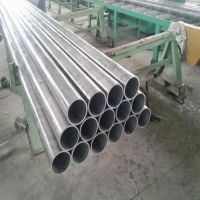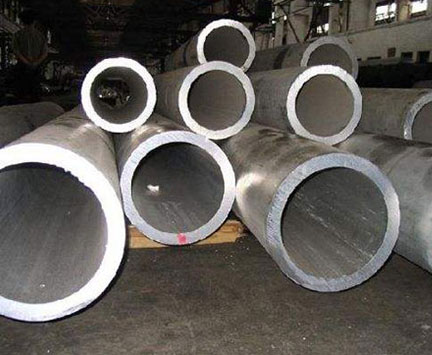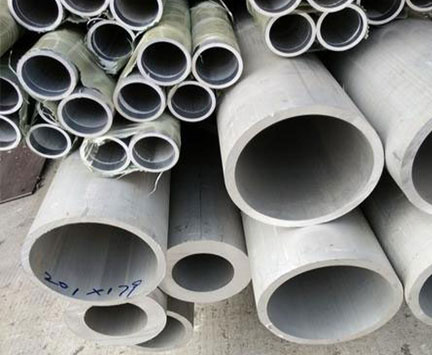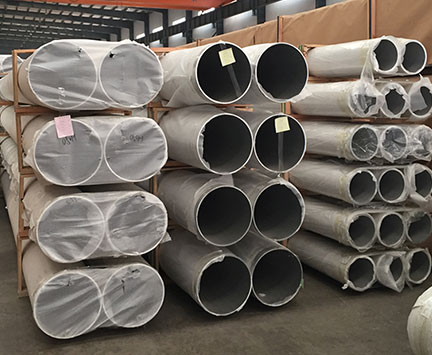
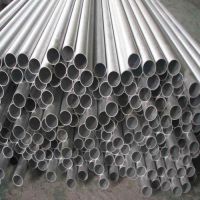
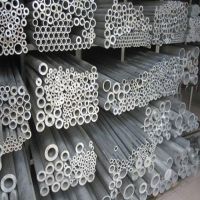
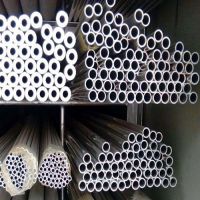
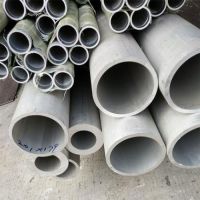




Aluminum alloy 6061 is industrial pure aluminum, which has high plasticity, corrosion resistance, electrical conductivity and thermal conductivity, but its strength is low, heat treatment can not strengthen, and its machinability is poor.
Detailed introduction
About 6061 Aluminium
6061 aluminum alloy is a high quality aluminum alloy product produced by heat treatment and pre stretching process.
6061 aluminum is a heat treatment strengthening alloy, which has good formability, weldability, machinability, medium strength and good operability after annealing. The main alloying elements of 6061 aluminum are magnesium and silicon, and form Mg2Si phase. If it contains a certain amount of manganese and chromium, it can neutralize the bad effect of iron; Sometimes a small amount of copper or zinc is added to improve the strength of the alloy without significantly reducing its corrosion resistance; There is also a small amount of copper in the conductive material to offset the adverse effects of titanium and iron on the conductivity; Zirconium or titanium can refine grain and control recrystallization structure; In order to improve the machinability, lead and bismuth can be added. When Mg2Si is dissolved in aluminum, the alloy has the function of artificial aging hardening.
Chemical Composition and Mechanical Property
Al | Si | Cu | Mg | Zn | Mn | Ti | Cr | Ti+Zr | Fe |
余量 | 0.40-0.80 | 0.15-0.40 | 0.80-1.20 | ≤0.25 | ≤0.15 | ≤0.15 | 0.04-0.35 | --- | ≤0.70 |
Tensile Strength(Mpa) | ≥205 |
yield strength(Mpa) | ≥110 |
EL(%) | ≥16% |
Density(g/cm³) | 2.72 |
Coefficient of elasticity | 68.9 GPa |
Applications for 6061 Aluminium
Manufacturing trucks, build-up buildings, ships, trams, furniture, mechanical parts, precision processing, a wide range of industrial materials..
Widely used in decoration, packaging, construction, transportation, electronics, aviation, aerospace, weapons and other industries. 2、 Aluminum used in aerospace is used to make aircraft skin, fuselage frame, girder, rotor, propeller, fuel tank, wall panel, landing gear strut, rocket forging ring, spacecraft wall panel, etc. 3、 Aluminum materials for transportation are used for the body structural parts of automobiles, metro vehicles, railway passenger cars and high-speed passenger cars, as well as doors and windows, shelves, engine parts, air conditioners, radiators, body panels, wheel hubs and warships. 4、 All aluminum can materials for packaging are mainly in the form of sheet and foil as metal packaging materials, which are made into cans, caps, bottles, barrels and packaging foil. Widely used in beverage, food, cosmetics, pharmaceuticals, cigarettes, industrial products and other packaging. 5、 Aluminum for printing is mainly used to make PS plate. Aluminum based PS plate is a new material in printing industry, which is used for automatic plate making and printing. 6、 Because of its good corrosion resistance, enough strength, excellent process performance and welding performance, aluminum alloy for building decoration is widely used in building frame, doors and windows, ceiling, decorative surface, etc. Such as all kinds of building doors and windows, curtain wall aluminum profiles, aluminum curtain wall plate, profiled plate, pattern plate, color coated aluminum plate, etc. 7、 Aluminum for electronic appliances is mainly used in various fields such as bus, stringing, conductor, electrical components, refrigerator, air conditioner, cable, etc. Specification: round rod and square rod, including aerospace fixture, electrical fixture and communication field.
6061 features
MgAl 6061-T651 is the main alloy of 6 series alloy, which is a high-quality aluminum alloy product after heat treatment and pre stretching process; Mgal6061 has excellent processability, good corrosion resistance, high toughness, no deformation after processing, easy coloring film and excellent oxidation effect.
Basic status code of 6061 aluminum alloy
F free working state is applicable to the products with special requirements for work hardening and heat treatment conditions in the forming process. The mechanical properties of the products in this state are not specified (uncommon)
The o-annealed condition is suitable for processed products with the lowest strength obtained by complete annealing (occasionally)
H work hardening state is applicable to the products whose strength is improved by work hardening. After work hardening, the products can go through (or not go through) additional heat treatment (generally non heat treatment strengthening materials) to reduce the strength
W solution heat treatment state is an unstable state, which is only applicable to the alloy after solution heat treatment and natural aging at room temperature. The state code only indicates that the product is in the natural aging stage (uncommon)
T heat treatment state (different from F, O, H state) is suitable for stable products after heat treatment with (or without) work hardening. T code must be followed by one or more Arabic numerals (generally for heat treatment strengthened materials). The status code of our common non heat treatment strengthened aluminum alloy is generally the letter H plus two digits.
For example, 1100 h14. The following is a brief introduction to the meaning of the following status codes.
The letter H is followed by two digits: the first digit indicates the method of hardening. The first number after H is: 1, 2, 3, 4
That is, h1* h1* means the simple hardening treatment
H2* h2* indicates processing hardening and incomplete annealing
H3* h3* means hardening and stabilization of processing
H4* h4* means processing hardening and painting treatment
The second digit indicates the degree of hardening the material has achieved.
The second digit after H is: 1, 2, 3, 4, 5, 6, 7, 8, 9
Hardness between h * 10 and 2
H * 2 1 / 4 hard
Hardness between h * 3 2 and 4
H * 4 hardness between 1 / 2 hard h * 54 and 6
H * 6 hardness between 3 / 4 hard h * 7 6 and 8
H * 8 full hard state h * 9 super hard state
(H is not much followed by three numbers, only a few. H111 indicates that a proper amount of processing hardening has been carried out after the final annealing. H112 represents the product that is suitable for hot working forming. H116 is a product made of 5 * * * alloy with magnesium content ≥ 4.0%
The status code behind the heat treatment reinforced aluminum alloy is usually the letter T plus one or more Arabic numbers to indicate the subdivision state of T, and the Arabic number 0-10 is added after t, indicating the subdivision state (called TX state). The number after t indicates the heat treatment procedure for the product. After t0 solid solution heat treatment, it passes through cold processing after natural aging. It is suitable for products with cold processing and strength improvement.
T1 is cooled by the high temperature forming process, and then aged naturally to a basically stable state. It is suitable for products that are not cold processed (straightening and leveling, but not affecting mechanical properties limit) after cooling by high temperature forming process.
T2 is cooled by high temperature forming process, and then it is aged to a stable state after cold processing. It is suitable for products cooled by high temperature forming process, which are cold processed, straightened and leveled to improve strength.
T3 solution heat treatment is carried out after cold processing, and then, after natural aging to a basically stable state. It is suitable for cold processing, straightening and leveling after solid solution heat treatment to improve strength.
T4 solution heat treatment after natural aging to the basic stable state. It is suitable for products that are not cold processed after solid solution heat treatment (straightening and leveling can be carried out, but not affecting mechanical property limit), and then natural aging.
T5 is cooled by high temperature forming process and then artificially aged. It is suitable for products that are cooled by high temperature forming process and not processed by cold processing (straightening and leveling can be carried out, but not affecting mechanical property limit), and then artificial aging.
T6 is artificially aged after solid solution heat treatment. It is applicable to products that are not cold processed after solid solution heat treatment (straightening and leveling can be carried out, but not affecting mechanical property limit), and then artificially aging.
T7 is treated by solid solution heat treatment and then aging by manual. It is suitable for products with strength exceeding the peak point on aging curve when artificial aging is used to obtain some important characteristics after solid solution heat treatment.
T8 solid solution heat treatment was cold processed and then artificial aging was carried out. It is suitable for cold processing, straightening and leveling to improve the strength of products.
T9 solution heat treatment after artificial aging, then cold processing state. It is suitable for products with cold processing to improve product strength.
T10 is cooled by high temperature forming process, then cold processing is carried out, and then artificial aging is performed. It is suitable for products that are cold processed, straightened and leveled to improve the strength of products. T state and txxx state (except stress relief state) add one Arabic digit (called TXX state) after TX status code, or add two Arabic digits (called txxx state), indicating the state of specific process treatment which has changed the product characteristics (such as mechanical properties, corrosion resistance, etc.).
T42 is applicable to products with sufficient and stable natural aging after solid solution heat treatment in o or F state, and for products with mechanical properties reaching T42 state after heat treatment of any state processed products by the demander.
T62 is applicable to products that enter artificial aging after solid solution heat treatment in o or F state, and also for products with mechanical properties reaching T62 state after heat treatment of any state processed products by the demander.
T73 is suitable for solid solution heat treatment, T74 and T73 state are defined as the same after aging to meet the specified mechanical properties and stress corrosion resistance indexes. The tensile strength of this state is greater than that of T73, but less than T76.
T76 is defined the same as T73 state. The tensile strength of the state is higher than that of T73 and T74, and the stress corrosion fracture resistance is lower than T73 and T74 respectively, but the anti peeling corrosion performance is still good.
T7x2 is suitable for the products with mechanical properties and corrosion resistance reaching t7x state after the solid solution heat treatment in o or F state. T81 is suitable for the products after solid solution heat treatment, and the strength is increased after about 1% cold processing deformation, and then artificial aging is carried out. T87 is suitable for the products after solid solution heat treatment, and the strength is increased after about 7% cold processing deformation, and then artificial aging is carried out. Stress relief state adds "51", or "510", or "511" or "52" or "54" after the TX or TXX or txxx status code above to indicate the product status code that has undergone stress relief treatment.
Tx51 txx51 txxx51 is suitable for thick plates, rolled or cold finished bars and die forgings, forging rings or rolling rings which are stretched according to the specified amount after solution heat treatment or after cooling during high temperature forming process. These products are no longer straightened after stretching. The permanent deformation of thick plate is 1.5% - 3%; The permanent deformation of rolled or cold finishing bar is 1% - 3%; The permanent deformation of forging ring or rolling ring of die forging is 1% - 5%. The permanent deformation of extrusion rod, type and pipe is 1% - 3%; The permanent deformation of the drawn pipe is 1.5% - 3%.
Tx511 txx511 txxx511 is suitable for extrusion bars, types and pipes that are stretched according to the specified amount after solution heat treatment or after cooling during high temperature forming process, and the drawn pipe. After stretching, these products can be slightly straightened to meet the standard tolerance.
Tx52 txx52 txxx52 is suitable for solid solution heat treatment or after cooling in high temperature forming process, stress is eliminated by compression to produce 1% - 5% permanent deformation.
Tx54 txx54 txxx54 is suitable for die forgings which are cold shaped to eliminate stress in the final forging die. T6, solution treatment (quenching), artificial aging
T62, annealed or solution in F state, manual aging
T61 is a special heat treatment state, which requires its strength to be lower than T6.
heat treatment
1. Rapid annealing: heating temperature 350-410 ℃; With the different effective thickness of the material, the holding time is between 30 and 120 min; Air or water cooling.
2. High temperature annealing: heating temperature 350-500 ℃; When the thickness of the finished product is more than or equal to 6 mm, the heat preservation time is 10-30 min, and when the thickness is less than or equal to 6 mm, the heat penetration is complete; The air is cold.
3 low temperature annealing: heating temperature 150 ~ 250 ℃; The heat preservation time is 2-3 h; Air or water cooling. Homogenization: 570 ℃, heat preservation for 7 hours, air cooling.
Online Message
- No Prev
-

- NEXT >



